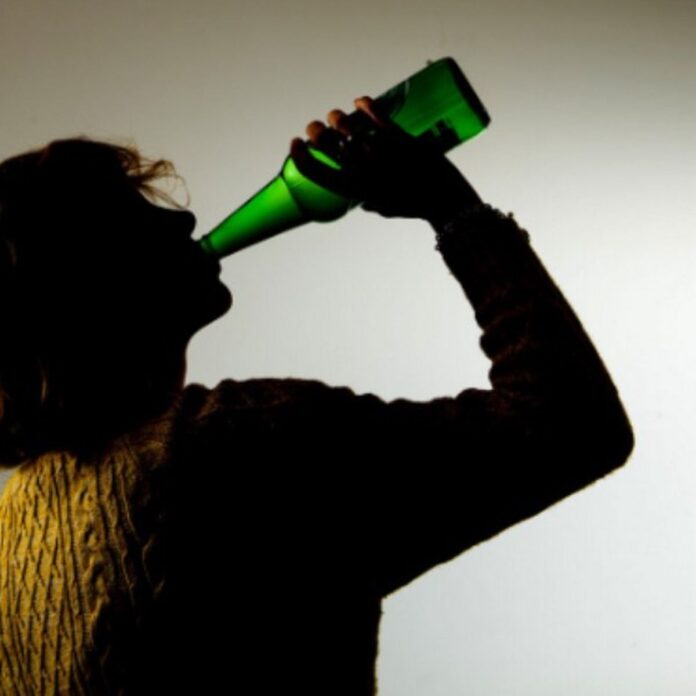New research by Newcastle University shows that adults already at risk of harm from heavy drinking bought significantly more alcohol during Covid-19 lockdowns – with households in the North buying more.
The study, published today in international scientific journal PLOS ONE, could help to explain why 2020 saw the biggest jump in alcohol-related deaths in the UK in the last two decades.
Academics from Newcastle University and the National Institute for Health Research (NIHR) Applied Research Collaboration (ARC) North East and North Cumbria, found that Britain’s heaviest drinkers – those in the top fifth of households that would consistently purchase the most alcohol – bought around 17 times more from shops and supermarkets than the bottom fifth during the lockdown period between March and July 2020.
The latest Office for National Statistics (ONS) data reveals there were 8,974 registered deaths from alcohol-specific causes registered in the UK in 2020 – an 18.6% increase compared with 2019 and the highest year-on-year rise in 20 years.
The study comes as figures released earlier this week from the Government’s Office for Health Improvement and Disparities showed that around eight million people in England are drinking so much wine, beer or spirits at home that it is harmful to their health, with a large increase in the numbers of people drinking at levels considered to be dangerous.
This latest research analysed recorded shopping data from almost 80,000 households between 2015 and 2020, which included around 5 million purchases of alcohol, to map-out buying habits over time.
The average purchase per adult within the top fifth group was significantly higher than any other group – at around 38 units per week – which equates to just under a litre of 40% ABV vodka or four bottles of 12% ABV wine per person.
However, this was averaged out per household, which could mean individuals in many households were drinking much more than this amount. Also, the shopping data may not have included extra ‘top-up’ purchases of alcohol that weren’t recorded – meaning actual levels could have been higher.
Households in more socially disadvantaged areas also bought more, as did those living in the North of England.
The study was carried out in an attempt to unravel what appeared to be a paradox between purchase data, public surveys and alcohol deaths – where overall shopping sales data had suggested that alcohol purchases in Britain did not appear to significantly increase after Covid-19 lockdowns were first announced in March of 2020, once the missing sales in pubs, clubs, bars and restaurants had been taken into account. However, many public surveys had suggested an increase in alcohol-related problems, and ONS data showed a sharp rise in deaths that were directly linked to alcohol misuse, indicating that some people were drinking a lot more.
This new study looked at that shopping data again – this time linking it more closely to factors such as household income, geographical location, alongside how much alcohol households would typically buy before lockdown.
The new analysis showed that the top fifth of households in England that would normally buy the most alcohol in shops and supermarkets increased their purchases around 17 times more than the bottom fifth. Households in more socially disadvantaged locations also bought more.
The study also found that households in the North of England – including the North East and Yorkshire and Humber regions – increased their purchases more than in any other part of Britain, with the suggestion that this is probably because the North has more socially disadvantaged, heavier-purchasing households.
The analysis also showed that the increase in purchasing was generally less pronounced in Scotland and Wales compared to England, which could be down to the Minimum Unit Pricing (MUP) policy currently in place in both Scotland and Wales – which has already been shown to reduce supermarket and store purchases of alcohol, particularly amongst some of the heaviest-drinking households.
Lead author Professor Peter Anderson from Newcastle University, said:
“Our analysis has highlighted that the heaviest drinkers and those living in some of the most deprived communities in the UK have increased their household alcohol purchases significantly during Covid-19 lockdown periods, with undoubted consequences for both physical and mental health – and in many thousands of cases sadly leading to death.
“This suggests that a focus on policies to reduce high levels of drinking are even more important in extraordinary times, such as those we’ve seen since March 2020 – where a complex range of factors can lead to higher and potentially dangerous levels of longer-term drinking.
“It’s also interesting to see that the increase in purchases were much less-pronounced in Scotland and Wales, which could be down to the minimum unit pricing policy in these devolved areas – a policy that has been proven to reduce alcohol purchases amongst the heaviest drinkers.”
Report co-author Dr Amy O’Donnell from Newcastle University, added:
“When we look at the latest figures for alcohol-attributable deaths for 2020, most of these are related to chronic, longer-term conditions associated with continued misuse of alcohol.
“It’s therefore likely that the significant increase in alcohol-attributable deaths we’ve seen in 2020 will have been amongst those with previous history of alcohol misuse or dependence, and our latest analysis of buying habits appears to support this.”







